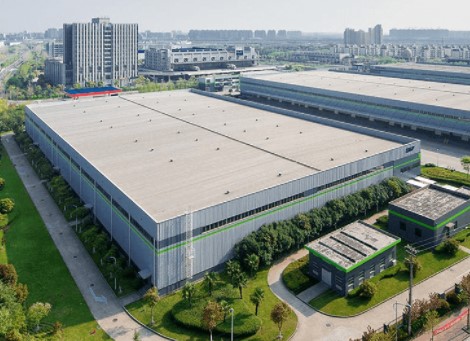8 Things to Consider When Choosing an Inventory Management System
Once your business grows, makes more sales and deals with more inventory, you realize it’s time to upgrade from manual to software-based inventory management. Then, once it grows a little more, you may even outgrow the current inventory management tool and decide it’s time for a more sophisticated, feature-rich solution. The good news is that the right software can accelerate…
What Is Dead Stock and How Can You Avoid It?
On average, 20%-30% of a company’s inventory is dead stock — which is a sizeable concern. At its most basic, dead stock is inventory that’s impossible or very unlikely to sell. It’s a step above overstocked goods, which is at risk of becoming dead inventory unless it is sold or otherwise repurposed. Unsellable inventory is a huge…
Margin vs. Markup: How Are They Different?
Margin and markup are often mistaken or used interchangeably. Because you calculate both using the same variables and the two figures are closely related, it’s easy to mix them up. Understanding the difference between the two can give you a more complete understanding of your business so you can plan for long-term success. Let’s compare…
5 Tips for Stock Replenishment
When working in a retail setting, it’s essential to know how much product is ordered and sold. Cafes and restaurants need to examine their stock levels often, as the amount of product available can quickly shift day to day based on promotions, seasonal trends and customer spikes. For online businesses, knowing how much stock you…

Everything You Need to Know About Minimum Order Quantity
If you have an e-commerce business that’s considering adding another revenue stream with wholesale, you suddenly face the prospect of setting a profitable minimum order quantity for your goods. Whether you manufacture your products with raw materials or buy finished goods straight from a manufacturer, you’ve likely encountered an MOQ as a buyer. Maybe you’ve…
Just-in-Time Inventory: What It Is and How to Manage It
Just-in-Time Inventory: What It Is and How to Manage It Are you searching for ways to reduce your e-commerce inventory level and slash costs without affecting product availability and prompt order delivery? The just-in-time inventory management system may be your ideal solution. This article will cover everything you need to know about just-in-time inventory management…
Backordering: What Is It and How Can It Impact Your Business?
Online retailers lose $22 billion annually when products go out of stock. One way to reduce those losses is to place an item on backlog. As a retailer, you may sometimes see this from your suppliers or consider using the strategy yourself. So, what does it mean when an item is on backorder? Under this scenario, customers…
How to Keep Warehouse Stockrooms Organized and Not Overfilled
Keeping a clean and organized warehouse affects much more than just aesthetics. It can boost your efficiency, keep employees happy, reduce errors, minimize safety hazards and lower costs. There are many ways to optimize your warehouse, so let’s look at a few of the top strategies. How to Keep Warehouses Organized Follow these tips for…
How to Keep Warehouse Stockrooms Organized and Not Overfilled
Keeping a clean and organized warehouse affects much more than just aesthetics. It can boost your efficiency, keep employees happy, reduce errors, minimize safety hazards and lower costs. There are many ways to optimize your warehouse, so let’s look at a few of the top strategies. How to Keep Warehouses Organized Growing e-commerce retailers, physical stores…
Generating an Inventory Asset Valuation Report
It’s never too early to start thinking about tax season. The sooner you get ahead of your inventory accounting processes, the easier your month-end, quarter-end and year-end accounting becomes. We’ve been fielding many questions on inventory asset valuation reports and why this information is so valuable. Let’s answer some of them and show you how to generate an…
Push vs. Pull System Inventory Management
Running a business can feel like a balancing act between making a profit and satisfying customers. An effective inventory management system can help you do both. First, you’ll need to figure out what an effective system looks like for your business. Most inventory management systems occur in one of two ways — a push system or a pull system.…
13 Expert eBay Inventory Management Tips
As an e-commerce retailer, you must sell on various online marketplaces to meet your audience wherever they shop. With this in mind, eBay is an important sales channel for any business. With 185 million active buyers,eBay is the perfect place to find new customersand sell to return customers. Of course, simply listing your products with this…
What Is Lot Number Tracking Software?
Modern inventory tracking technology allows businesses to monitor many types of information, including lot numbers. Lot numbers refer to groups of products to help you determine an item’s source. Lot ID tracking software like Finale Inventory enables you to manage lot numbers to increase your company’s efficiency. Learn more about lot numbers and how you can…
How the Logistics Industry Prepares for the Holiday Season
For years, the winter holiday season, which stretches from Thanksgiving to the end of the year, has been the busiest time of year for retailers, warehouses and shippers. Increased demand for products means that stores and fulfillment centers need to ensure enough stock to successfully fulfill orders. Increased demand for shipping means that companies need…
Barcode Batch and Serial Number Scanners
If you operate a business in which you are buying and reselling items with serial numbers or lot numbers, you may have looked into barcode scanning as a method of recording shipments or stock takes more efficiently and with less chance of human error. If you searched on the internet for “barcode scanners for serial numbers,” you…
What Is Cycle Counting?
If your business has vast numbers of products flowing in and out of your warehouses, that’s often an excellent sign. It means you’re running a flourishing business — and it also means you need practical tools to inform yourself about what inventory you have and how it fluctuates over time. Cycle counting offers an attractive…
5 Ways to Reduce Inventory Costs
You have two main options if you want to boost your company’s bottom line. You can increase your earnings, or you can reduce your costs. In some cases, doing both can be the best option. If you want to reduce costs, one place to look is at your inventory. The products your company sells allow…
5 Tips to Save Warehouse Energy Costs
Commercial businesses — including warehouses — accounted for 12% of the United State’s total energy consumption in 2019, consuming 9.4 quadrillion Btu. Non-refrigerated warehouses consume an average of 6.1 kilowatt-hours of electricity per square foot each year. All this energy consumption adds up, cutting into a warehouse’s bottom line. As a warehouse or logistics manager, you must balance…
5 Ways to Create an Efficient Logistics Team
Your company depends on efficient logistics to keep things moving. Logistics control the movement of resources from one location to another. Who works where and when is part of logistics, as is how products get from point A to point B. The more smoothly your company’s logistics plan operates, the more smoothly your business will…
How to Get Around High Amazon Fulfillment Costs
When you operate a small e-commerce company, getting your product on Amazon can feel like a victory. Selling on Amazon gives you access to the site’s millions of customers, potentially putting your product in front of a wider audience than you can reach on your own. The online retail giant goes a step further, offering…




















